A web address is more than just a string of letters and slashes.
It’s often the first thing your audience sees before they click.
A vanity URL or custom branded link, takes that long, messy web address and turns it into something short, memorable, and brand-focused.
Think of it as a sharp business card for your online presence.
Instead of sending someone to a clunky link full of random numbers and symbols, you can guide them to a clean, professional address that actually represents your brand.
This is why companies, influencers, and marketers are ditching generic links in favor of these personalized versions.
They don’t just look better, they perform better.
Let’s break down what they are, why they matter, and how you can create your own from scratch.
Understanding Vanity URLs
A vanity link is a customized web address that is easy to remember, share, and type.
It usually contains your brand name, campaign keywords, or a clear call-to-action.
For example:
- Standard URL:
yourcompany.com/index.php?id=3746&ref=summer2025 - Vanity URL:
yourcompany.com/summer
Both take users to the same page, but only one makes a strong first impression.
A clean link signals professionalism, tells users what to expect, and reduces the friction between curiosity and action.
How Vanity URLs Differ from Regular URLs
Regular URLs are functional but forgettable. 🤔
They’re generated automatically by your website or platform, often bloated with tracking parameters and database IDs.
Vanity URLs, on the other hand:
- Are branded to your business name or campaign.
- Are shorter and easier to recall.
- Are designed to be shareable on social media, in print ads, or even verbally.
In short, regular URLs are like raw, unedited photos, they work, but they’re not polished.
Vanity links are the edited, share-worthy versions that you proudly send out into the world.
Benefits of Using a Custom Short Link
Vanity URLs aren’t just about appearance.
They carry real marketing advantages that can impact both clicks and conversions.
Building Trust Through Consistent Branding
When your link matches your brand, it instantly feels safer to click.
People are more cautious than ever about suspicious links, and a recognizable web address gives them reassurance.
- For example,
on.guccci.com/UnderASharedSkyis immediately trusted more thanbit.ly/3hGfT2K.
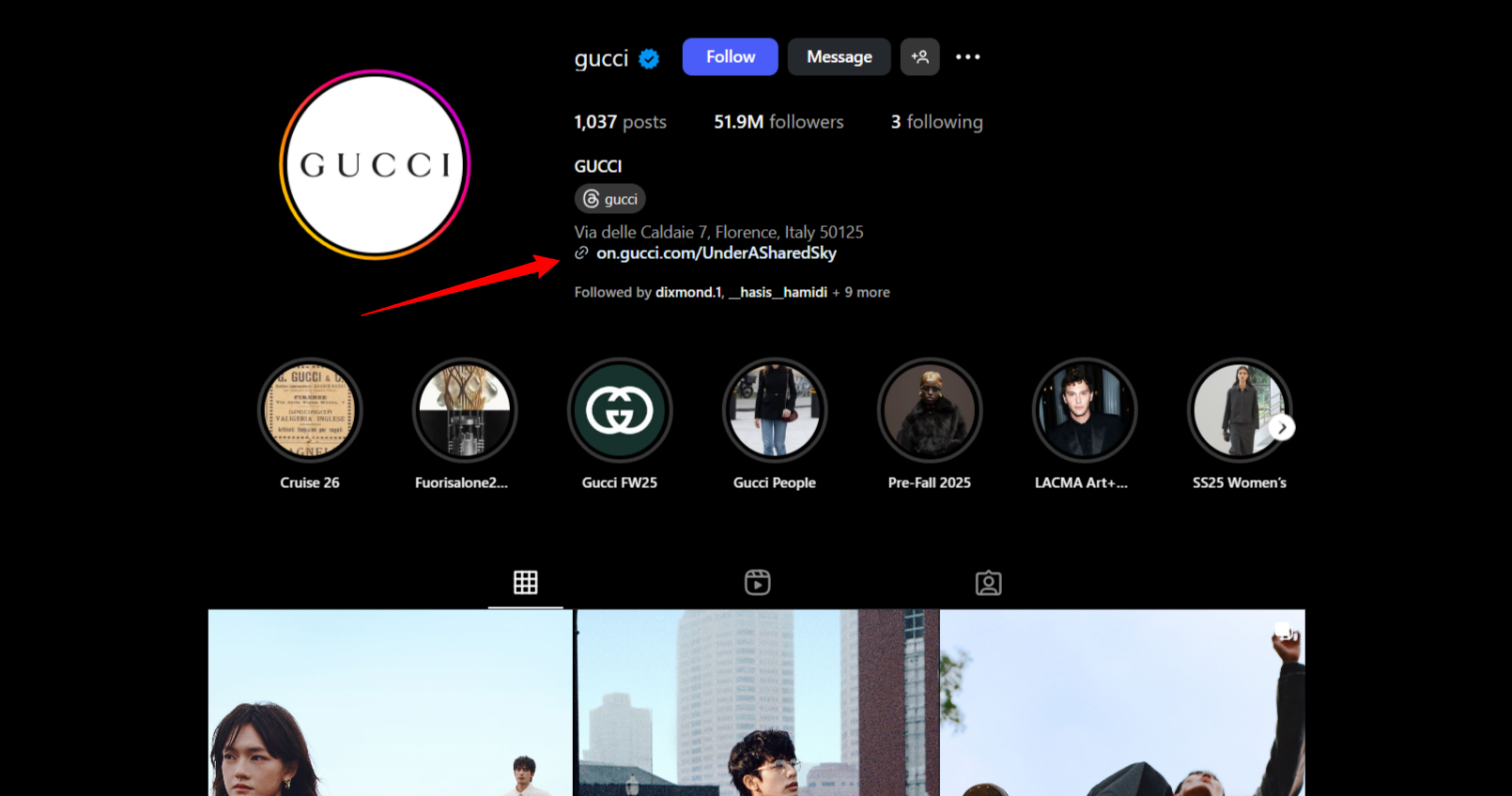
A branded short link shows that the message is coming from you, not a third party. This consistency across channels strengthens brand recognition over time.
Improving Click-Through Rates with Memorable Links
The easier a link is to remember, the more likely people are to use it later.
Short, descriptive links also look cleaner in ads, emails, and social media captions, which can directly improve click-through rates.
If you’re promoting an event, yourbrand.com/launch is far more appealing than a generic URL. It’s easier to recall without having to scroll back and search for the link.
Tracking Campaign Performance With Short Links
A modern link shortener like Linko let you add built-in tracking. This means every click on your vanity link can be monitored in real time.
You’ll know:
- Which channels drive the most traffic
- What time of day gets the most clicks
- Which campaigns resonate with your audience
By analyzing this data, you can refine your strategy and focus your budget where it works best.
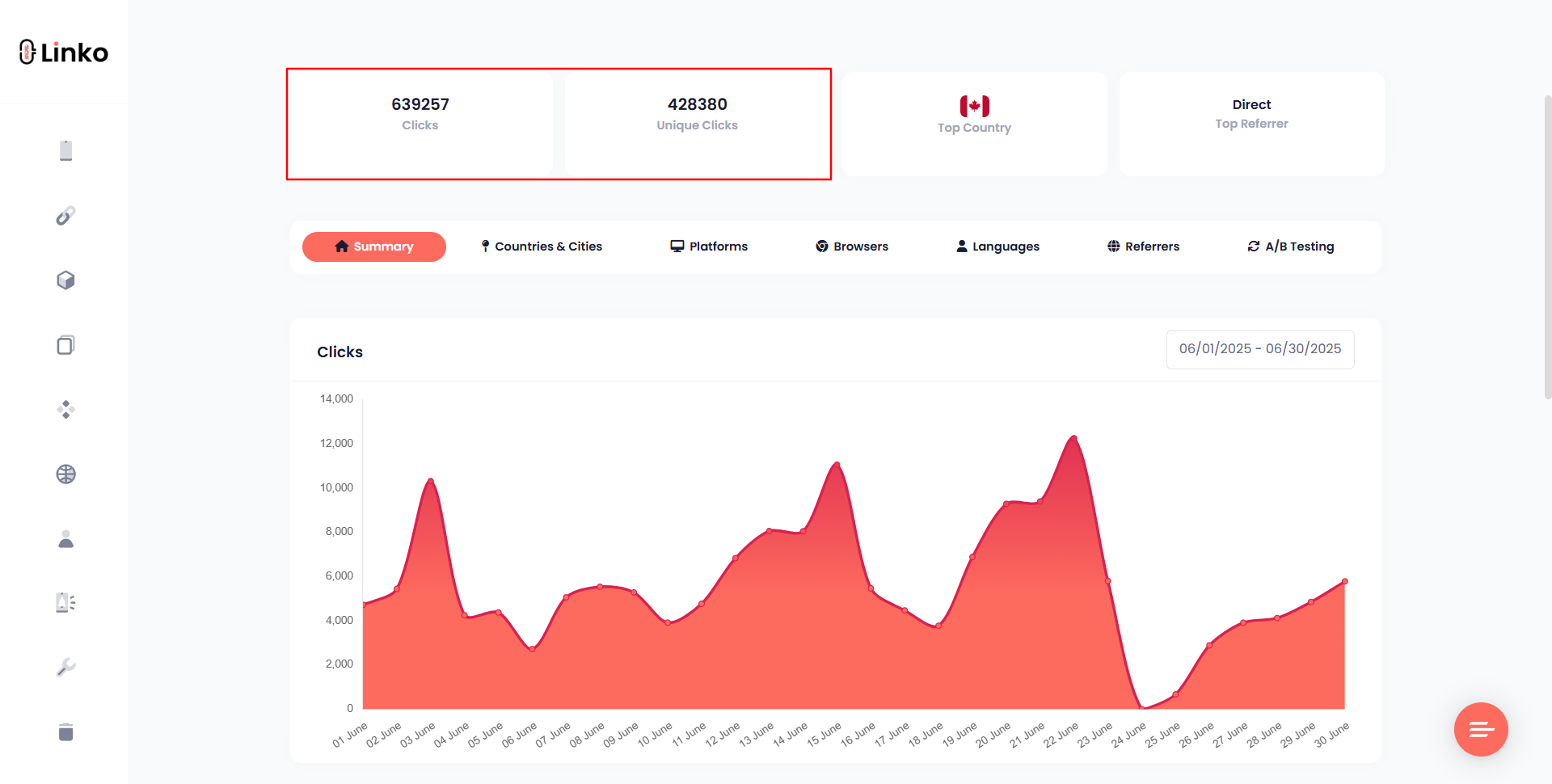
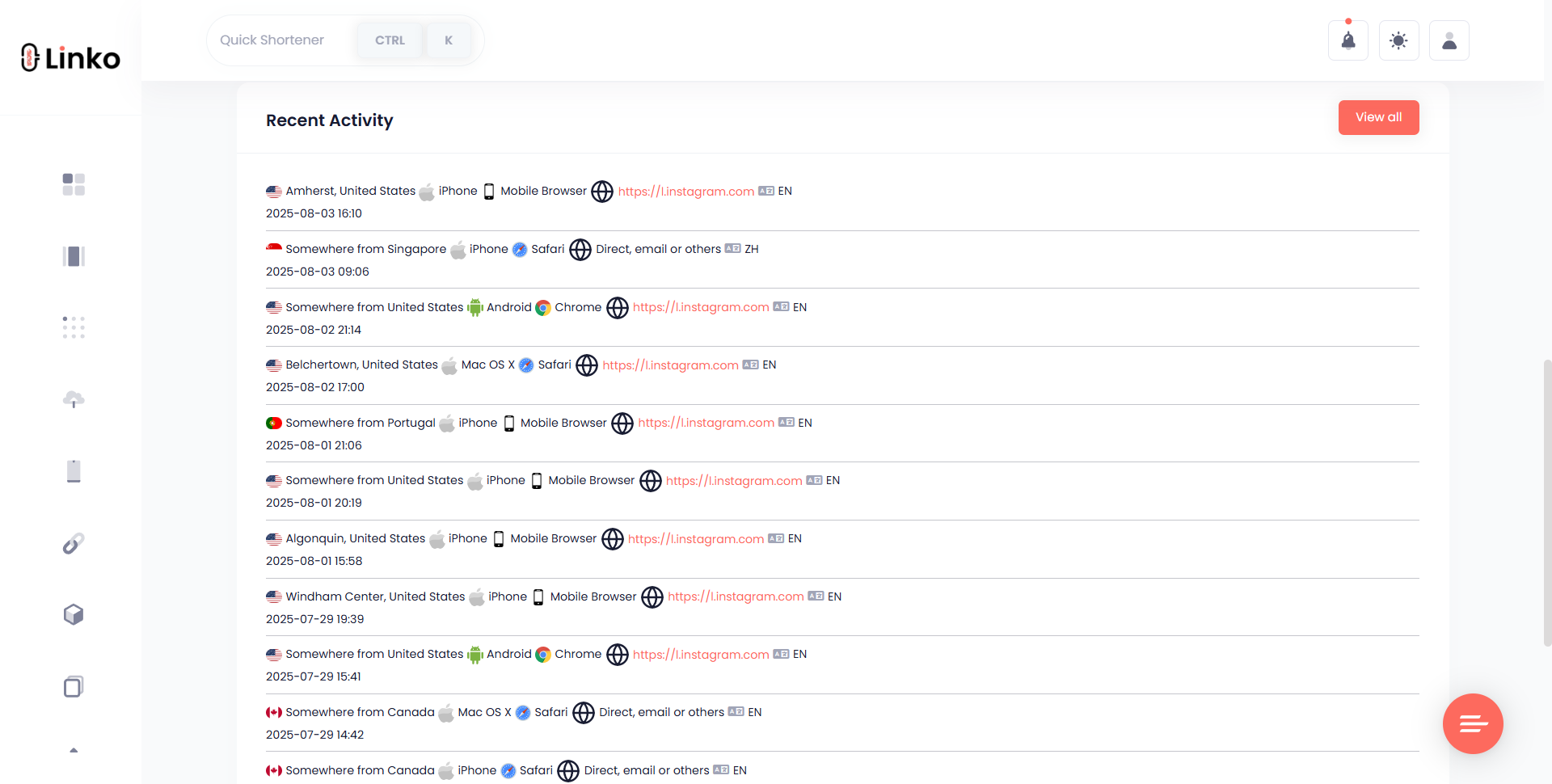
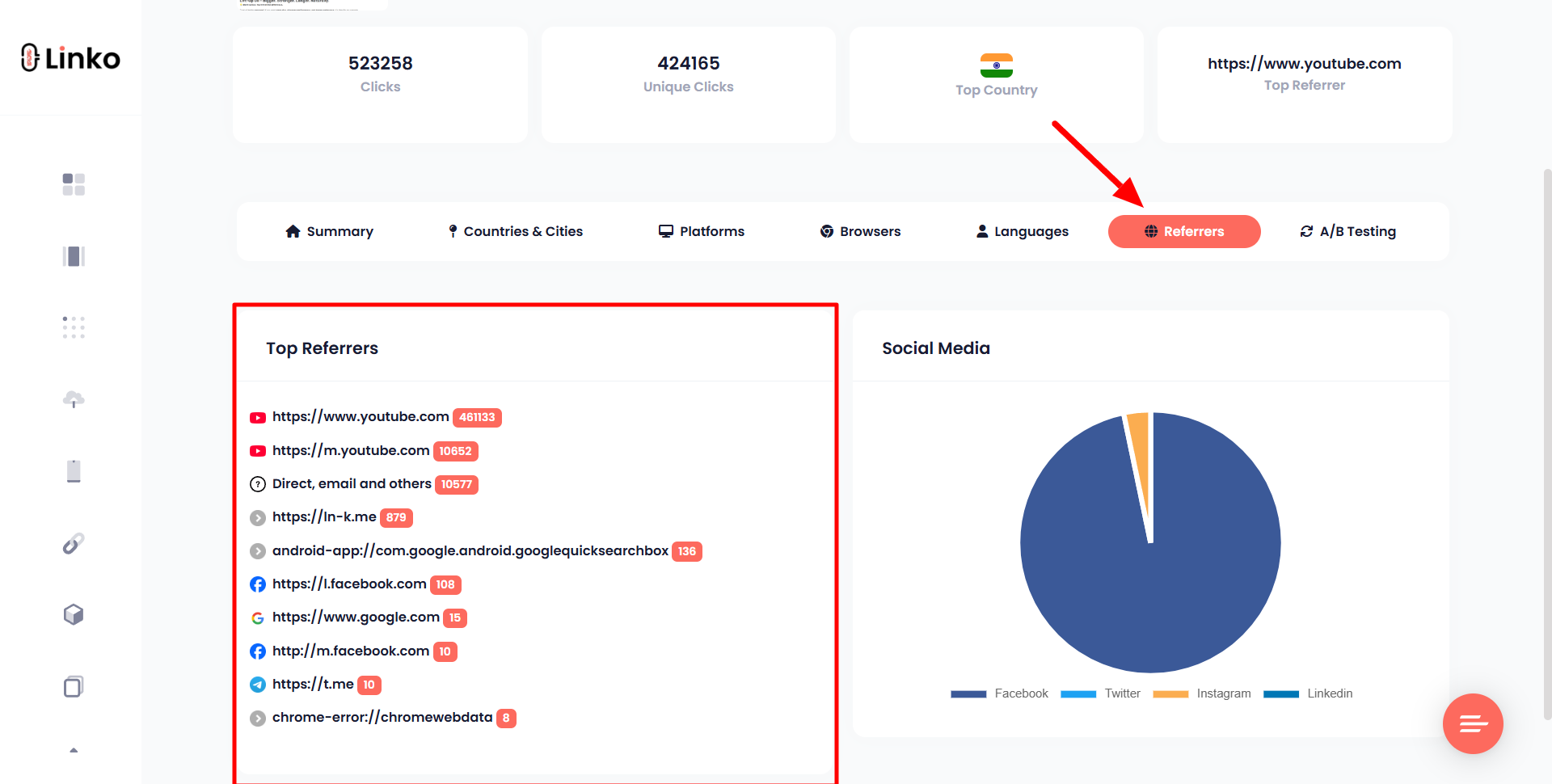
How to Create Your Own Vanity URL (Step-by-Step Guide)
Setting up your own vanity link doesn’t have to be complicated. Here’s how to do it from start to finish.
Choosing the Right Domain Name for Branding
Your domain is the foundation of your vanity URL.
The best option is your main brand domain (e.g., yourbrand.com). If that’s not available, you can register a short, brand-related domain specifically for campaigns.
Tips for choosing:
- Keep it short, ideally under 15 characters.
- Make it easy to spell and pronounce.
- Avoid hyphens and numbers unless they’re part of your brand name.
Some brands even create domain hacks (like go.brand.com or brand.link) to make links look fresh and unique.
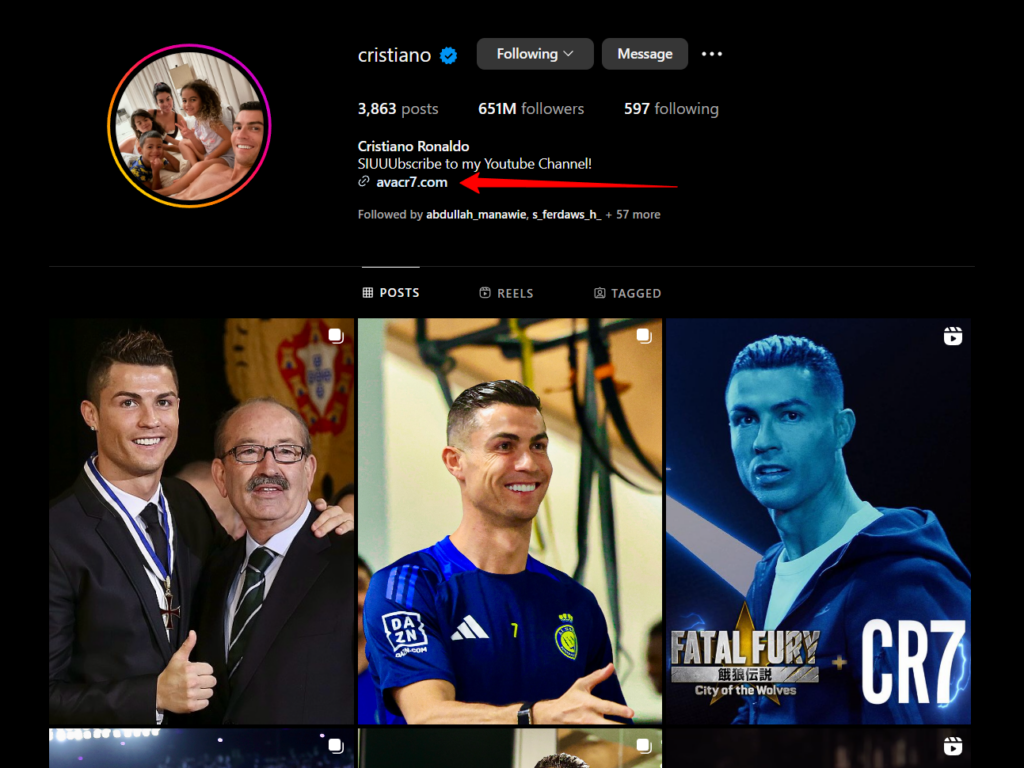
Setting Up DNS and Redirect Rules
Once you have your domain, you’ll need to set up DNS records and redirects so your vanity URL points to the correct destination.
This usually involves:
- Logging in to your domain registrar.
- Updating your DNS A record or CNAME record to connect with your link management tool.
- Configuring a 301 redirect from your vanity URL to your actual long link.
If you’re using a platform like Linko, this process is simplified with guided steps inside your dashboard.
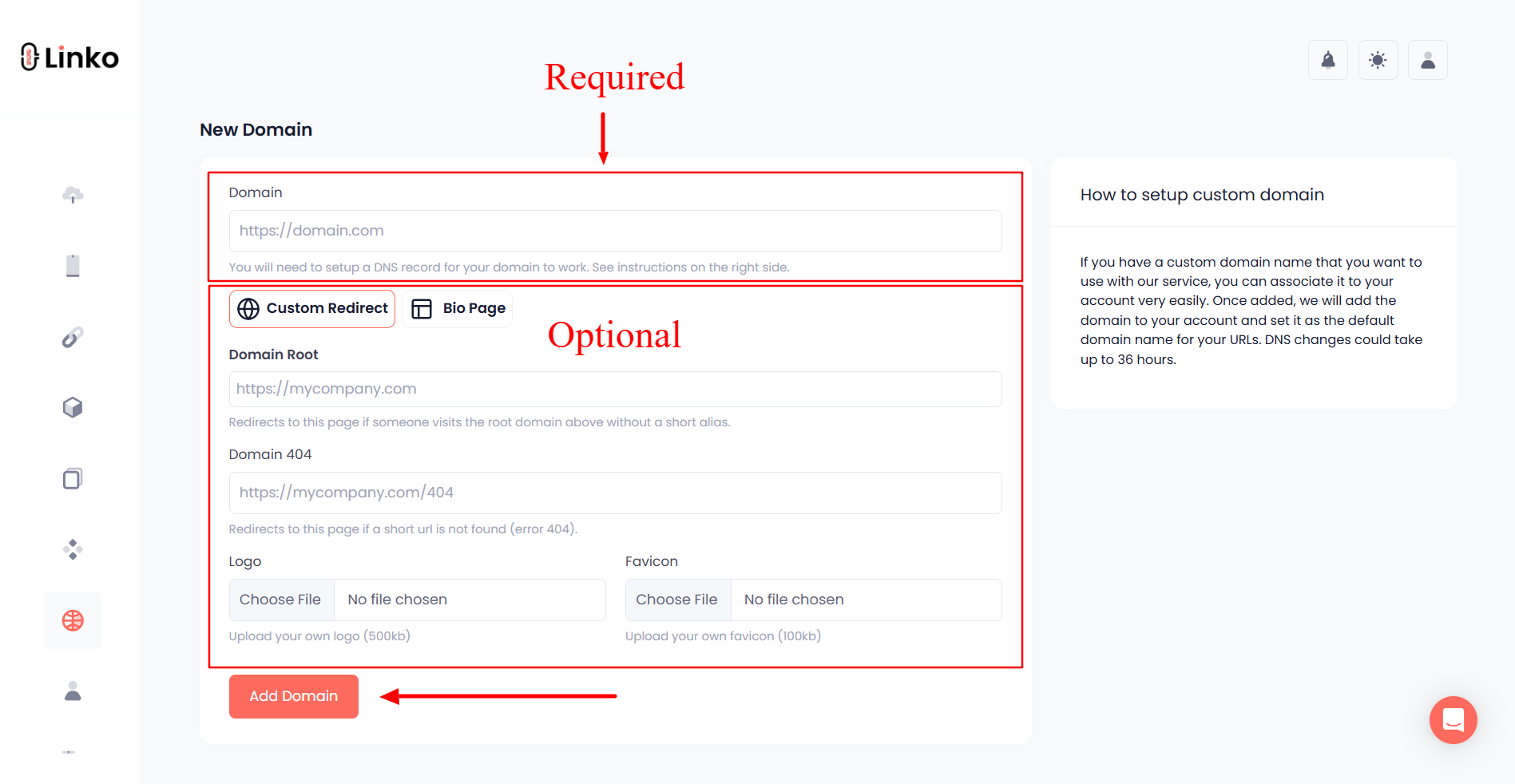
Using Link Shortener Tools for Faster Setup
Manually setting up redirects is fine for one or two links, but if you need multiple vanity URLs for different campaigns, it’s better to use a link shortener platform.
With Linko, you can:
- Shorten single or bulk URLs without needing a CSV file.
- Create campaign-specific vanity links in minutes.
- Add UTM parameters for precise analytics.
- Generate QR codes for offline promotions.
It’s not just about shortening, it’s about creating branded and trackable links that fit your marketing goals.
Best Practices for Crafting Memorable Vanity Links
Even the best domain won’t help if your vanity link itself is confusing or forgettable.
To make your links stick in people’s minds:
- Keep it simple: Avoid jargon or overly long words.
- Make it relevant: Tie it to your product, service, or campaign.
- Think visually: Choose words that look clean and balanced when written out.
- Limit slashes: Stick to one short path if possible.
For example, brand.com/win is more powerful than brand.com/summer-giveaway-2025-special-offer. Short and punchy always wins.

Lesser-Known Tips for Effective Vanity Link Strategy
The basics of creating a custom link are straightforward, but small tweaks can make a big difference in how your vanity URLs perform.
Here are strategies many marketers overlook.
Using Keywords to Boost Search Visibility
Adding relevant keywords to your vanity URL can help improve discoverability in search results.
While the link itself is not the most powerful SEO factor, it still provides context to both search engines and users.
For example, if you’re promoting an online course, brand.com/photography-course gives a clearer signal than brand.com/course1.
Searchers see exactly what they’ll get, and Google can associate the link with your topic.
Keep it natural. Avoid keyword stuffing and focus on words that flow logically with your brand name.
Creating Campaign-Specific Short URLs
One of the most underused tactics is making unique vanity links for each marketing channel or campaign.
Instead of using one generic link for everything, create channel-specific variations:
brand.com/facebookofferbrand.com/emailvipbrand.com/tiktokdeal
This allows you to track clicks per channel and tailor your messaging accordingly. Tools like Linko make it easy to generate multiple links in minutes, even in bulk.
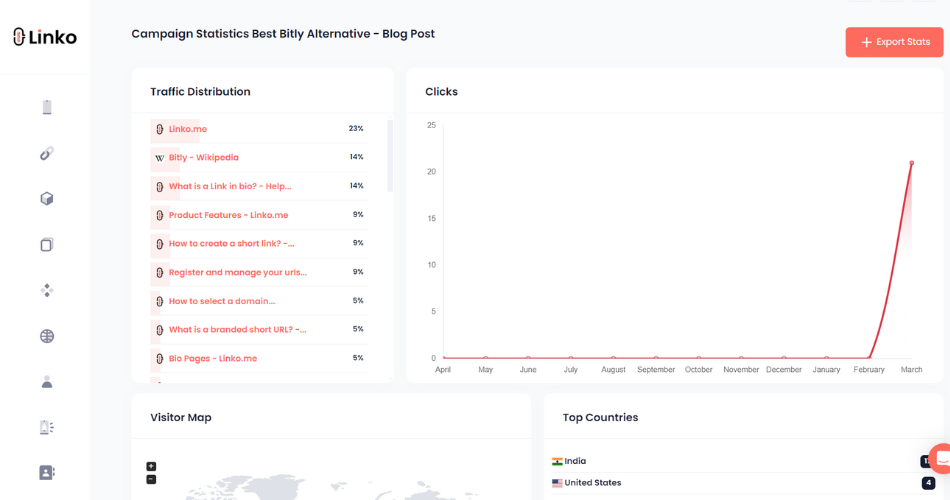
Real-World Examples of Vanity Links in Action
Looking at how others use branded short links can inspire better strategies for your own campaigns.
Comparing Long URLs to Clean, Branded Versions
A clunky URL like:example.com/index.php?categoryid=348&source=adcampaign
…becomes far more appealing as:example.com/winter-sale
The second version is easy to read, remember, and share. The destination is identical, but the experience feels smoother for the user.
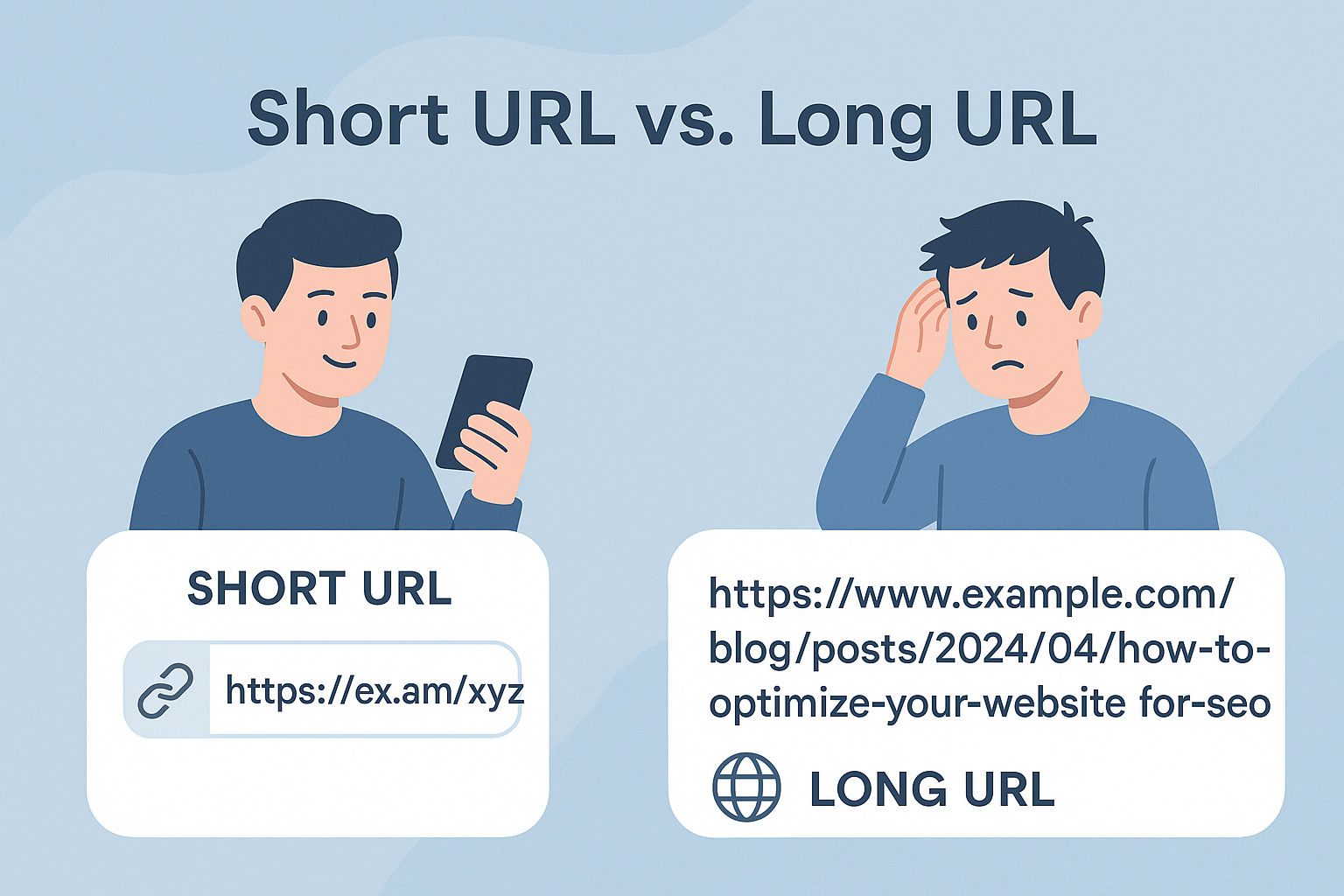
Popular Industry Use Cases You Can Learn From
Different sectors use vanity URLs in creative ways:
- Retail: Seasonal campaigns like
store.com/blackfriday - Events: Conference registration links such as
event.com/register - Nonprofits: Donation drives like
charity.org/give - Influencers: Affiliate partnerships using
influencer.com/productname
Each example turns a forgettable link into a branded asset that carries marketing value.
How Vanity Domains Improve Brand Recall
Brand recall is all about repetition and recognition.
Every time someone sees your branded short link in an ad, on social media, or printed on merchandise, they get another subtle reminder of your name.
This works even if they don’t click immediately. Over time, a consistent vanity domain builds familiarity, and familiarity builds trust.
Common Mistakes and How to Avoid Them
Even a simple vanity link strategy can backfire if you overlook the basics.
Here are frequent errors and how to steer clear:
- Overcomplicating the URL – Adding too many words or symbols makes the link harder to type and remember. Keep it short and direct.
- Using inconsistent branding – If your link doesn’t match your brand name, people may not trust it.
- Letting redirects expire – If your domain registration lapses or your redirect stops working, you lose traffic and credibility.
- Ignoring analytics – Without tracking clicks, you can’t measure success or improve campaigns.
- Forgetting mobile users – Make sure your destination pages are mobile-friendly, since most clicks happen on phones.
The good news is that platforms like Linko reduce these risks with built-in analytics, easy domain management, and quick editing features.
Final Thoughts
A vanity URL is more than a prettier link.
It’s a branding tool, a trust signal, and a measurable marketing asset all in one.
When used strategically, it can lift click-through rates, improve campaign tracking, and strengthen your online identity.
From choosing a relevant domain to creating campaign-specific variations, every step should focus on clarity, consistency, and user trust.
And with modern tools like Linko, you can manage all of this at scale without the headaches of manual setup.
If you want your links to work harder for your business, now is the time to retire those long, generic URLs and replace them with clean, branded, and trackable ones.
FAQs
Is a vanity URL only for big brands?
No. Any business, influencer, or content creator can benefit from using a custom short link. It’s just as useful for small campaigns as it is for global marketing.
Do vanity links help with SEO?
They can indirectly help by improving click-through rates and making links more descriptive. While the direct SEO boost is limited, the user engagement benefits are significant.
Can I track clicks on a vanity URL?
Yes. Tools like Linko let you track every click, see traffic sources, and analyze performance in real time.
How many vanity URLs can I create?
With Linko’s free plan, you can shorten up to 50 links. Paid plans allow from 1,000 to unlimited links, depending on your subscription.
Can I use vanity URLs offline?
Absolutely. You can print them on flyers, business cards, or posters, and even pair them with QR codes for quick scanning.
Can I change my vanity URL after creating it?
Yes, most link management platforms allow you to edit or update your vanity link’s destination at any time without changing the actual short link. This means you can reuse the same link for different campaigns if needed.
What’s the difference between a vanity URL and a custom domain?
A custom domain is the unique web address you own, like mybrand.com. A vanity URL uses that domain to create short, branded links, such as mybrand.com/sale.
Do vanity links work for social media platforms?
Yes. Vanity links are perfect for platforms like Instagram, TikTok, or Twitter where space is limited and clickable links need to be short, clean, and on-brand.
Are there character limits for vanity URLs?
While there’s no strict technical limit for most browsers, shorter is always better. Ideally, keep the path (after the slash) under 20 characters for easy recall.
Can vanity URLs expire?
They won’t expire as long as you maintain your domain registration and keep your link management account active. If you stop paying for the domain, the link will stop working.


Comments